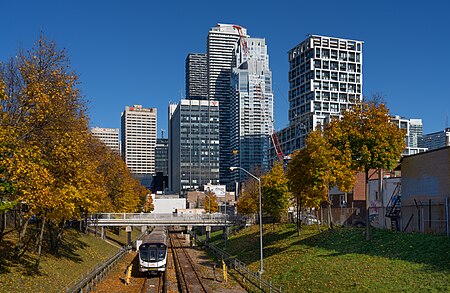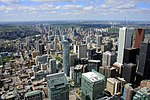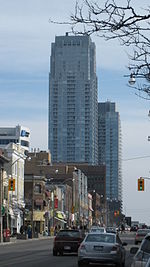Yonge–Eglinton

Yonge–Eglinton is a neighbourhood in Toronto, Ontario, Canada, at the intersection of Yonge Street and Eglinton Avenue. It is central to the area of Midtown Toronto, one of four central business districts outside Downtown Toronto. The City of Toronto defines its boundaries as Briar Hill Avenue to the north, Yonge Street to the east, Frobisher Avenue and a line in that direction west to Elmsthorpe Avenue, then north to Eglinton Avenue, east to Avenue Road and north to Briar Hill. According to a survey conducted in 2017 by Toronto Life, it was the highest-ranked neighbourhood in Greater Toronto in terms of housing, crime rate, transit, health, entertainment, people and employment. It is geographically central to the city of Toronto and surrounded by a number of the country's highly affluent neighbourhoods, including Forest Hill, Lytton Park and Lawrence Park.
Excerpt from the Wikipedia article Yonge–Eglinton (License: CC BY-SA 3.0, Authors, Images).Yonge–Eglinton
Eglinton Avenue East, Old Toronto
Geographical coordinates (GPS) Address Nearby Places Show on map
Geographical coordinates (GPS)
| Latitude | Longitude |
|---|---|
| N 43.706802 ° | E -79.398271 ° |
Address
Eglinton Avenue East 8
M4P 1A9 Old Toronto
Ontario, Canada
Open on Google Maps









